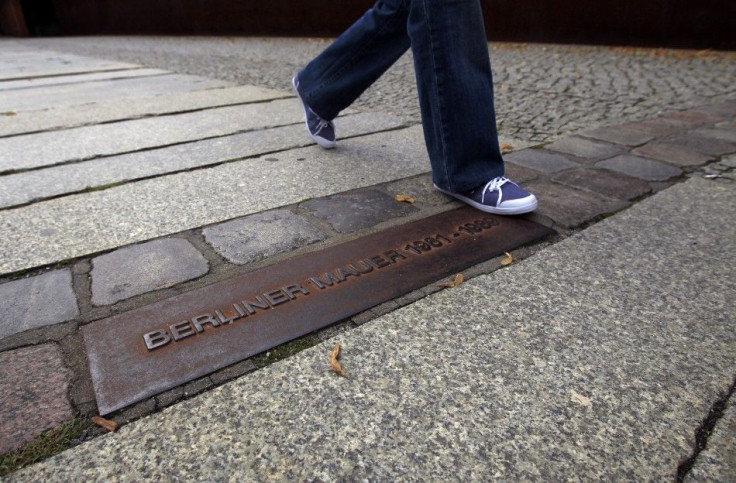Escape from East Berlin with wedding dress in hand

Erika Schallert fled East Berlin on August 15, 1961, with nothing but the clothes she was wearing and her half-finished wedding dress, determined that nothing was going to stop her getting married -- not even the Berlin Wall.
Two days before, East German border guards in the dead of night set up the first barbed-wire version of the Wall that would become a 3.6-meter-high concrete barrier dividing Berlin for nearly thirty years.
The frontier between East and West Germany, from the Baltic to Bavaria, had been sealed for a decade but Berlin was still open due to its special status under the occupying powers -- the United States, France, Britain and the Soviet Union.
Schallert, then 22, was living with her parents in the east but studied in the west where her fiance, Herbert, lived.
She had crossed the border almost every day for 13 years, and been stopped by border guards only a handful of times, so she ignored her fiance's warnings that a crackdown on the accelerating exodus of people into the West was inevitable.
Sitting in her large apartment half a century later, she recalled how her father told her on the morning of August 13 that transport links had been severed.
"At that moment, I knew what had happened. Before then I had always banished that thought," she said.
ESCAPE
Leafing through the black-and-white pictures in her wedding photo album, Schallert recalled how she was set only on getting out and to her fiance.
On the day of her escape, the petite woman put on the black dress she planned to wear for her civil wedding and wrapped up the cloth out of which her church wedding dress was to be tailored.
She made for a friend's apartment close to Bernauer Strasse, which was in the West but whose buildings on one side were in the East, accessible only from the Eastern side.
Just four days later the street would be the scene of the Wall's first casualty when a man fell to his death trying to climb down to the pavement from an apartment.
Schallert lied to the border guard who was standing in front of the apartment, saying she was visiting a tailor to have her wedding dress made, and after several hours was joined by four acquaintances of her friend who had been allowed to cross from the West.
When they left the apartment as a group, three of the four went over to distract the guards outside the building while Schallert and the other woman quietly and confidently
walked across the street and to freedom.
"It felt like I was walking 200 meters, but it was maybe the width of a building only," Schallert says. "The woman walked behind me and just kept saying: 'Stay calm'. And then I was in West Berlin."
NIGHTMARES FOR YEARS
Schallert, who had nightmares for years afterward, says she blocked out any thought her escape could fail, which would have landed her in prison if not worse.
At least 136 people were killed trying to get through the Wall, most of them shot by East German border guards. More than 75,000 people were imprisoned for trying to leave East Germany.
"It was clear to me that it could've gone wrong but I suppressed that thought. ... I just functioned," Schallert says.
She was married on September 4 as scheduled, with just a handful of guests and in her dress and heels, and soon took over a job in a photo lab from a friend who left for West Germany.
"They were just happy they had someone to work at all as thousands of people who lived in East Berlin and worked in West Berlin ... were suddenly gone," while others left the city altogether.
More than 20 years after the Wall has come down, Schallert and her husband still live in West Berlin, streets away from Tempelhof airport.
Schallert says to this day, she has no interest in living in the former East Berlin, even though it bears no resemblance to the drab, grey city of that Communist era.
"It's still the East."
© Copyright Thomson Reuters 2024. All rights reserved.











